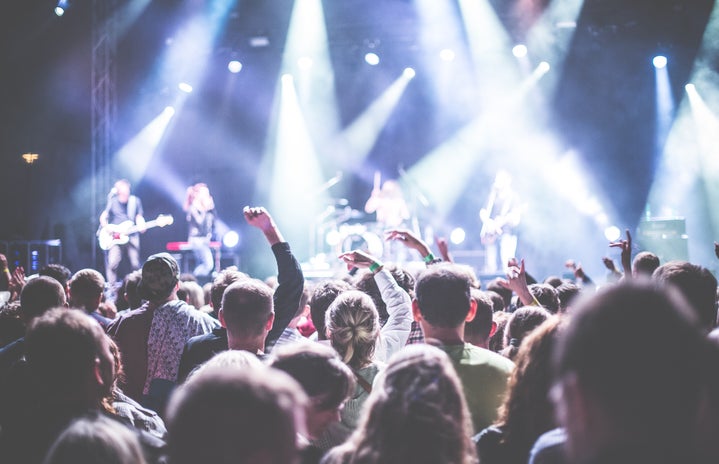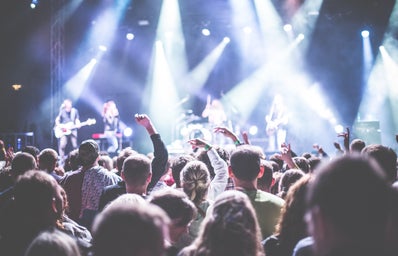In Paris, they sit at cafés for hours on end, and in Israel they yell at you, but really mean no harm. Everywhere you travel has a different culture, way of living and most authentic cultural view that makes one country unlike any other. To truly understand a different culture’s authenticity is through food and drink, which is why I immerse myself in one’s culture through their coffee and different café’s. Café culture has become an increasingly popular way of touring new places. In fact, the Huffington Post has an entire section dedicated to café culture. Many different countries have their own specialized way of café culture, such as what time they drink their coffee, how they take their coffee, how long they spend in cafés, and more. The best cafés are always the hidden ones that only the locals know about. For this reason, I like to live like a local when travelling and I talk to other locals around me to truly get a glimpse into their everyday lives. Often, the local people give you insight on the best places to get a cup of coffee in their city. Coffee contains some acidic contents which have a stimulating effect on humans due to the caffeine. This stimulating effect has made coffee one of the most popular drinks in world and is the reason for the introduction to café culture.
1. Tel Aviv: Café Lucia
Cafe Lucia, Balfour Street 18, Tel Aviv, Israel, +972 3 808 0017
Café Lucia is minutes away from the thriving Carmel Market, which is the main spot for locals to buy fresh fruits and vegetables in Tel Aviv. Although extremely close to the city centre, Café Lucia is extremely quiet except for the background laughter of children from the nearby elementary school. Israel is known as the land of milk and honey. During the time of the Bible, God promised the Israelites that they would have a constant flow of milk and honey, and that they did. Israel’s milk production is 10x faster than any country in the world. Their milk is extremely thick and fresh, which makes many Israeli’s drink of choice “אפוף קפה,” which is translated from Hebrew to “upside down coffee”; however, Israelis really mean a latte or cappuccino. Israel is also home to an abundance of startup companies which means there is limited office space. This is why café culture is extremely popular in Tel Aviv because locals tend to make these cafes their modernized offices.
2. Brazil: Rubro Café
R. da Quitanda, 191 – Centro, Rio de Janeiro – RJ, 20091-005, Brazil (21) 2223-3214
Brazil holds the title of the world’s largest producer of coffee all around the world, and it is their most valued commodity. Their café culture is completely out of the ordinary for Western travelers. Coffee is so prevalent in Brazil, that children are served coffee daily at school, and most gas stations serve free coffee. A coffee break midday is a ritual amongst Brazilian workers. They make their way to Rubro Café, which is on the site of the city’s old coffee trading exchange and a very popular spot for locals. They order a “cafezinho,” which is translated to “little coffee.” Because coffee is consumed so regularly throughout the day, locals really are drinking a “little coffee”—cafenzinho is a small cup, filtered and extremely hot. Another drink of choice is a “Café Com Leite,” a double strength coffee served with hot milk. Coffee beans in Brazil are grown at much lower altitudes than other countries, resulting the beans being more bitter.
3. Paris: La Closerie Des Lilas
171 Boulevard du Montparnasse, 75006 Paris, France +33 1 40 51 34 50
In the early 20th century, Paris was known as the place for writers. French cafés were used as a place for intellectuals to meet and discuss all things art, philosophy and history. Cafés were a place for individuals to express their artwork and for writers to write. In Paris, there are café’s on every corner, on every street, and in every neighbourhood. The most popular areas for Café culture are in the Latin Quarter and in Saint Germain. In the 19th century, café culture was called “The Café Society,” connoting “a group of beautiful people.” La Closerie des Lilas is a famous café due to its close proximity to where Ernest Hemmingway once lived and where his unofficial office was located. In Paris, pursuing the arts, such as writing in a café, is as common as eating at one. Hemmingway met at this café many times to meet up with other writers such as F. Scott Fitzgerald and Ford Madox Ford. French cafés mostly look all the same, with outdoor seating, circular tables and all the chairs facing the street. In cafés in Paris, it’s not just coffee that is served, but a full blown menu of breakfast, lunch, dinner and even alcoholic drinks.
4. Seattle: Starbucks
102 Pike Street, Seattle, Washington 98101
Seattle is known as the specialty coffee centre of the planet and the place of true coffee industry veterans. This is because Seattle was the location of the original and infamous Starbucks brand. Starbucks was created in 1971 with a single store located in Seattle’s famous Pike Place Market. Without the creation of Starbucks, avid Starbucks coffee drinkers would cease to exist. There would be no double chocolate chip Frappuccinos or pumpkin spice lattes to sip. Since the creation of Starbucks, the spread of new cafés in Seattle is becoming quite popular as these people love their home brewed coffee. However, Starbucks has stayed the prominent brand in Seattle, the United States, Canada and more. Today, there are more than 15,000 stores in 50 countries. The brand succeeds all over the world due to its unique brand and purpose. Starbucks’ mission was to create a company that was different than any other coffee chain—one that wasn’t just about coffee but one that created a connection between coffee drinker, barista and other coffee drinkers. Starbucks wanted their coffee joints to be more than just a quick cup of joe. They offer free Wi-Fi and washrooms, giving their customers the opportunity to sit for a while to do work or chat with someone. Starbucks’ loyalty from its customers is its reason for success.
5. Vienna: Café Central
Herrengasse 14, 1010 Wien, Austria +43 15333763
Vienna’s coffee experience is not just having a single cup of coffee, it’s experiencing the elegant style and ambient feeling in one of Vienna’s grand cafés. Coffee culture in Vienna is often described as “the city’s public living rooms.” This is because after purchasing a cup of coffee you are able to linger and take in the heritage of the café you are in. Coffee culture in Vienna began in 1683 when the Polish army found coffee beans. They originally believed it was camel feces; however, the Polish King took the bean to one of his officers, Jerzy Franciszek Kulczycki, who used this bean to experiment. He headed milk and sugar to create the coffee known in Vienna today, as he was the first person to start a coffee house. A typical setting for a Viennese coffee house or as they called “Kaffeehauser,” has recently been named on UNESCO’s list of the “national agency for the intangible cultural heritage.” It is extremely common for piano music to be played in the evening at a coffee shop, especially in Café Central. Café Central was opened in 1876 and is the largest, most extravagant, grand coffee house in Vienna. Its popularity stems from intellectual individuals such as Sigmund Freud, Leon Trotsky and Vladimir Lenin regularly having a cup of coffee at Café Central.


